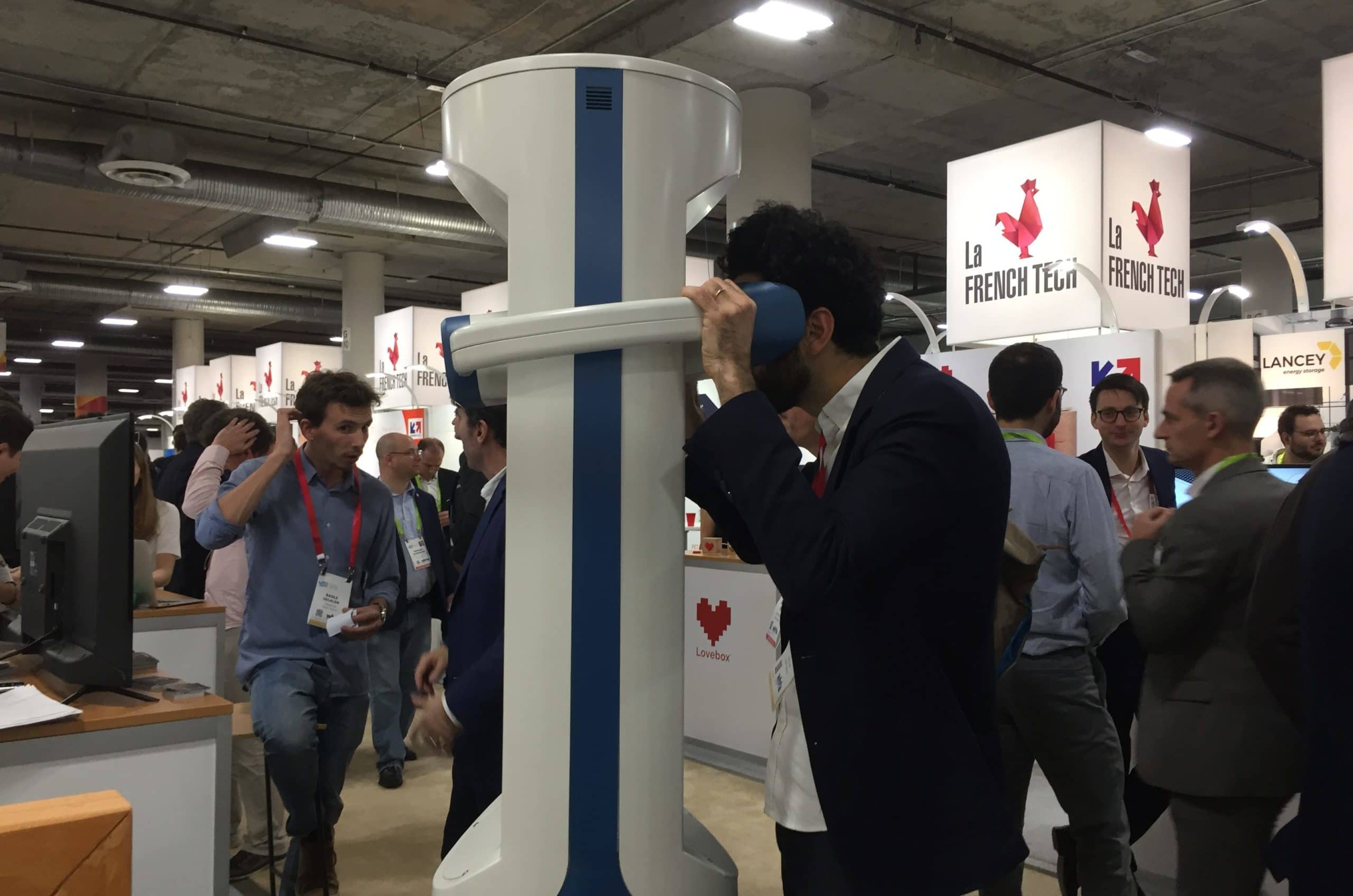Eureka! Self-Service VR Kiosk Timescope Offers Airports New Tourism Tool
Share

APEX Insight: As Samsung unveils it’s latest products in what it calls a “city” and LG opts for a 92-foot-long “OLED Canyon,” 800 startups gather in Eureka Park about a mile and a half away, with booths a fraction of the size. But bigger isn’t always better, so APEX Media walked the halls of Eureka Park at CES, looking for the next big thing in PaxEx. In this first installment of “Eureka!,” we bring you Timescope, a self-service virtual reality kiosk.
The idea for a site-specific VR telescope came to founders Adrien Sadaka and Basile Segalen when they were visiting Pompeii in 2010. “We were frustrated by the experience because it was the summer and there were a lot of people and construction, so we said, ‘We need to develop something – whether it is an app or a physical thing – that can help these spaces create a really cool experience onsite.’ But, at the moment, there wasn’t any real VR technology that we could use. So we put the idea aside, until the first VR devices came to the market,” Sadaka explains.
Described by Sadaka and Basile as “the first ever self-service virtual reality kiosk,” Timescope uses directional speakers, a 360-degree rotation mechanism and 4k screen resolution to immerse users into another space and time. With a multi-lingual touchscreen, height adjustments and an advanced mode for users with reduced mobility, Timescope terminals are designed to be as accessible as possible.
“We need to develop something that can help these spaces create a really cool experience onsite.” €” Adrien Sadaka, Timescope
To create a VR experience of the past, Timescope graphic designers work with local historians to review historical sources and accurately reconstruct a scene with 3-D animation and ambient sounds. Clients who choose to root their Timescope experience in the present can offer 360-degree video tours, and for those who’d like their users to foray into the future, the Timescope team relies on urban 3-D modeling techniques.
In addition to heritage sites like Galeries Lafayette and Pont d’Arcole bridge in Paris (which give passersby the opportunity to go back in time to the 20th and 17th centuries, respectively), Timescope terminals have been deployed in Paris Charles de Gaulle and Lyon-Saint-Exupéry airports, where they are being used to promote tourism, giving travelers the chance to explore some of France’s most popular landmarks before visiting them in person.
“In airports, what we do is different from what we do in cities. We teleport people from the airport to another place: a destination or, in a transit zone, to the city you are in but don’t have the opportunity to visit. In the arrival zone, you may be teleported to points of interest in the city you are arriving in,” Sadaka says. “So there are different use cases for the airports. We even have the possibility to fly over Paris to promote the region as a destination.”
Although Sadaka was not able to reveal details about impending rollouts, he assures that travelers will be seeing more of Timescope in France and abroad later this year, adding that the startup has attracted “a lot of demand from the US and international countries.”


